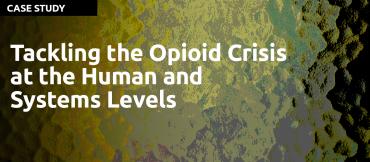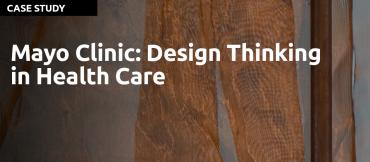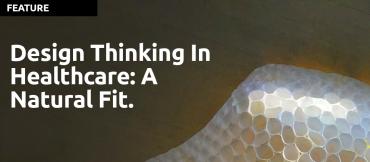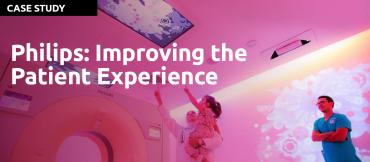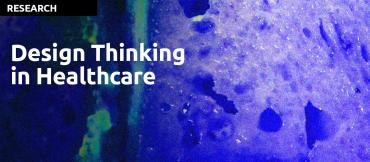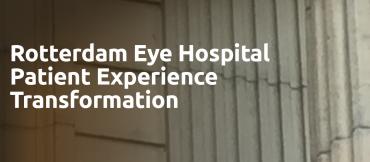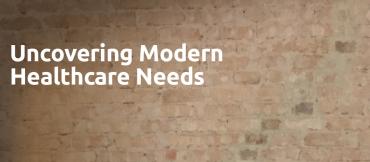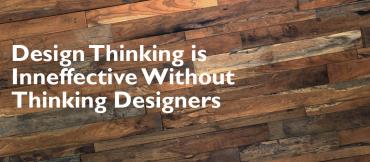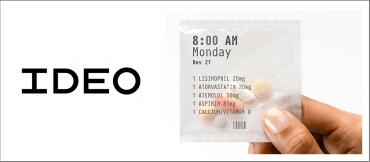
The application of Design Thinking in Healthcare has found a natural fit with practitioners within the profession due to the professions inherent need to empathize with patients. Design Thinking in Healthcare has been successfully used by corporations such as SwipeSense, the Dubai Health Authority, Rotterdam Eye Hospital, Philips Healthcare, the Alzheimer's Association, the Diabetes Association and many more. Read Design Thinking Healthcare case studies as well as other articles about the use of design thinking in Healthcare on this page.
How the Lummi Tribal clinic used design to address opioid overdoses
Responding to growing interest among designers, global health practitioners, and funders in understanding the potential benefits of applying design thinking methods and tools to solving complex social problems, the Innovations for Maternal, Newborn, and Child Health (MNCH) Initiative (Innovations) developed and piloted innovative interventions to address common barriers to improving the effectiveness of basic MNCH health services in low-resource settings.
In the early 2000s, Mayo Clinic physician Nicholas LaRusso asked himself a question: if we can test new drugs in clinical trials, can we in a similarly rigorous way test new kinds of doctor-patient interactions?
Design thinking in Healthcare is an almost perfectly natural fit. On the front end of Healthcare are the nurses who are naturally empathic. A key approach necessary for successful design thinking. Their role is to intimately understand the needs and take care of the problems of their patients. Their daily approach to problem solving requires them to empathize with patients. This approach fits perfectly with the approach of design thinking in healthcare, which is to understand patients/users/customer needs before looking for solutions.
In a connected world, Design Thinking is more important than ever. We need a healthy mix of people to get involved in the innovation process. No single designer, or even team of designers, can ever hope to understand all the facets of a particular subject. Instead, we need insights from engineers, researchers and marketeers from inside the company, to name just a few, not to mention external partners and end users. Our role at Philips as designers is to orchestrate this process and connect the dots by empathizing with our customers and each person in the innovation team.
The 4 case studies by Penn Nursing illustrate how nurses can be really powerful collaborators and generators of solutions within Healthcare. The videos describe the main attributes that nurses bring to the problem solving table
Applying Design Thinking to health care could enhance innovation, efficiency, and effectiveness by increasing focus on patient and provider needs. The objective of this review is to determine how Design Thinking has been used in health care and whether it is effective.
Developing environmental sustainability strategies, the Double Diamond method of LCA and design thinking: a case study from aged care. Journal of Cleaner Production, 85, 67-82. Stephen J. Clune*, Simon Lockrey.
Development and testing of a mobile application to support diabetes self-management for people with newly diagnosed type 2 diabetes: a design thinking case study. Numerous mobile applications have been developed to support diabetes-self-management. However, the majority of these applications lack a theoretical foundation and the involvement of people with diabetes during development. The aim of this study was to develop and test a mobile application (app) supporting diabetes self-management among people with newly diagnosed type 2 diabetes using design thinking.
Identifying pathways to change behavior in the U.S. healthcare system. 5.8 million Americans are living with Alzheimer’s disease. By 2050, this number is projected to rise to nearly 14 million. It’s currently the 6th leading cause of death in the U.S. and kills more people than breast cancer and prostate cancer combined. While early diagnosis can help, only 50% of those living with the disease are diagnosed. The Alzheimer’s Association asked "how might we diagnose the disease earlier?"
Over the past 10 years, the hospital’s managers have transformed their institution from the usual, grim, human-repair shop into a bright and comforting place by incorporating design thinking and design principles into their planning process.
The Dubai Health Authority (DHA) sought to make it easier for their patients to deal with these logistics, and found that they didn’t just need help connecting to medical information; They needed help connecting to their loved ones as well.
Together with IBM, DHA tackled these issues.
There are numerous success stories that we know nowadays about the application of design thinking in the health field. Some we have already mentioned and others mentioned below, however, we want to emphasize how much of the success stories that exist are from outside our country (Spain).
This makes clear the need to implement this methodology in our health systems in order to improve, increase performance and, above all, improve the patient experience when it comes to these services.
The truth is, Design Thinking processes and philosophies have certainly become more mainstream in recent years. But are we overselling the capability? Is Design thinking living up to its potential? We’ve all seen articles that say Design Thinking is dead or it’s overrated. Of course there’s always room to improve, but let’s be careful not to throw the baby out with the bath water.
We go to hospitals expecting to get better. But in many cases, they only make you sicker. According to the Centers for Disease Control and Prevention, over 2 million Americans contract Hospital acquired infections, resulting in 100,000 deaths and over $30 billion in costs to the health care system per year.
A case study by IDEO. The challenge: Help PillPack, an IDEO startup-in-residence, build a venturing strategy for its prescription home-delivery system.

